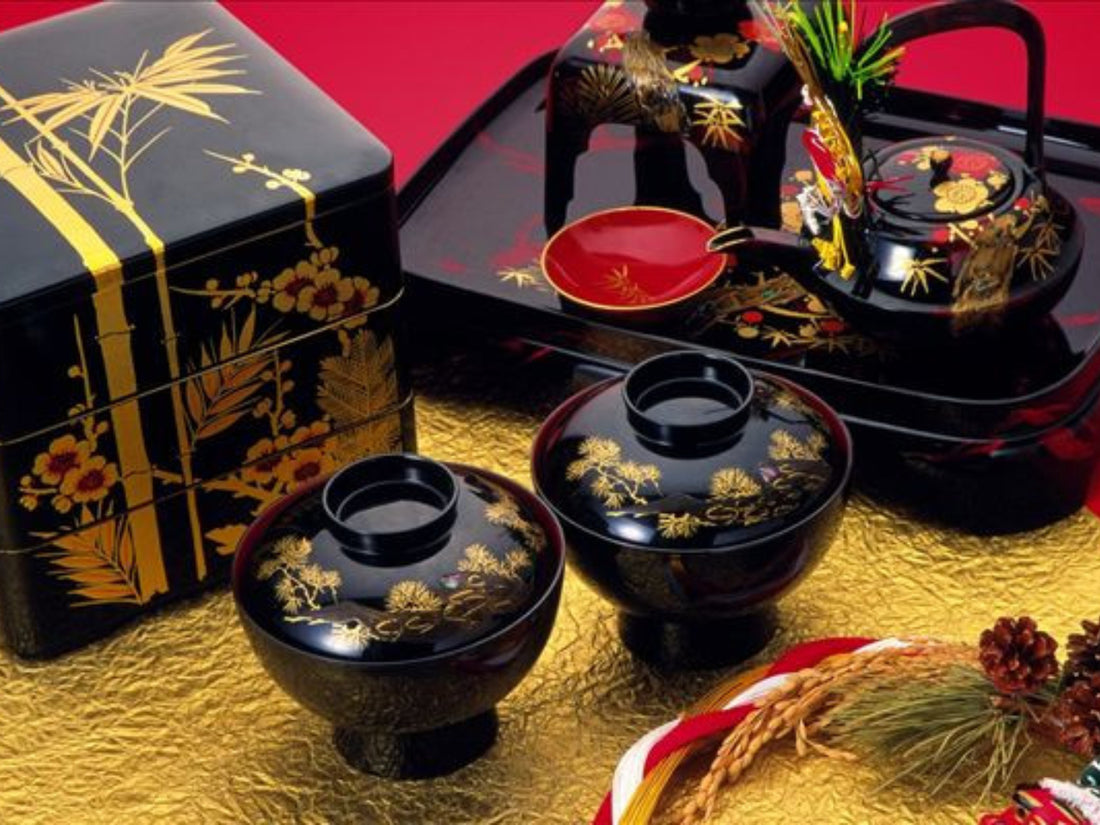Shikki is one of Japan’s representative traditional craft items. For centuries, it has been adored by Japanese people for its pleasing smooth touch and glossy visual appeal. From delicate pieces to simple designs, Shikki is used as tableware, containers, decorations, and even fashion items.
What is Shikki

Shikki (lacquerware) is a Japanese craft of painting paper, basketry, leather, and wooden items with “urushi.” “Urushi” is a Japanese lacquer that provides a beautiful color and gloss. Urushi is made of the sap of the urushi tree (Rhus vernacifera), also known as the Japanese varnish tree. The sap is toxic in its natural state. Therefore, the harvested sap will be stored for 3-5 years, before being filtered and dehydrated to remove impurities. After treatment, the sap becomes transparent resin with a honey-like texture, which can be tinted in different colors.
The Shikki mainly features “kuronuri” (black lacquer) and “shunuri” (vermilion lacquer). The greatest attributes of lacquerware are its durability and water resistance, and it can be used on various materials to increase their strength. The lacquer can be easily restored even though it grows thin or chips over time. Types of Shikki include tableware, decorative pottery, containers, vases, furniture, and tea sets.
History of Shikki

The earliest record of lacquer trees in Japan was in the Jomon period (6,000-300 BC). During the late Jomon period, the Japanese began to recognize how durable the sap could be and began to use it to coat wooden items, pottery, and baskets to allow them to last longer. It wasn’t until the Nara period (710-794 AD) that lacquer was used for decorative purposes. During this time, lacquer techniques became more advanced and the iconic gold and silver inlay pattern appeared.
In the Heian period (794-1185), the Japanese developed the unique maki-e technique, the method of drawing designs with lacquer and then sprinkling metallic powder (gold, silver, and copper) of various sizes on top. The carved lacquer technique that was imported from the Song Dynasty of China in the Kamakura period (1185–1333) inspired Japanese craftsmen to create Kamakurabori, a method of carving wood and then coating lacquer. In the Muromachi period (1336–1573), maki-e, the most complicated and advanced technique made Shikki known at courts overseas and become a valuable gift to the emperor. The Edo period (1603–1868) saw the increasing export of Shikki. It became so popular worldwide that Shikki was referred to using the word “japan” by the British, similar to the word “china”, which refers to ceramics.
Techniques of Shikki

Over the centuries, the techniques of Shikki developed, and more elements were added to the items. Here are some techniques of Shikki:
Lacquered bamboo: The bamboo is split into strips, coated with lacquer, and waved into different forms.
Kanshitsu: Take a form with clay and plaster, and then apply the lacquer to the mold. Apply additional layers of lacquer to the piece after the mold is removed.
Maki-e: It is the representative Shikki technique. It is a luxurious decoration done by painting motifs on the surface and then sprinkling gold powder on top.
Urushi-e: It is the oldest and simplest Shikki technique that consists of patterns painted in colorful lacquer.
Raden: It puts the inner layer of shells on the top of the Shikki to make it iridescent.
Choshitsu: A piece of wood is first coated with multiple layers of lacquer and then carved into ideal forms.
Hyomon: Metals (gold, silver, or copper) are cut into a thin sheet in various shapes and then create an inlay motif.
Rankaku: Eggshells are crushed into fine powers to use as pigment to paint motifs on Shikki.
Kamakurabori: Raised designs are carved into wood and then coated with lacquer.
Chinkin: Lines and dots are curved on the surface of the Shikki, into which gold powder and gold leaf are inlaid.

